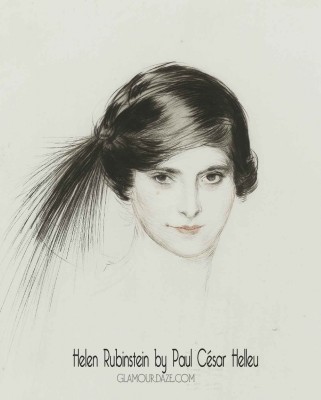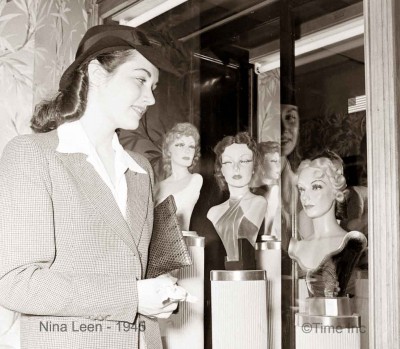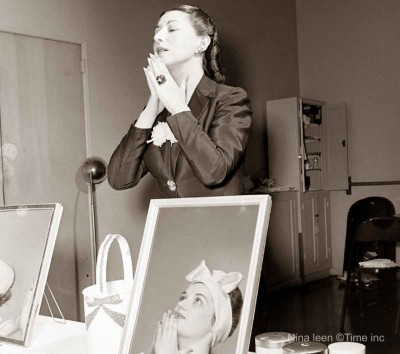How Helena Rubinstein, a little girl from Krakow, helped build the 20th Century beauty industry and outsmarted Wall Street.

A Day in the Life of Helena Rubinstein
Full of thoughts, Helena Rubinstein begins another day with a bath, followed by rubbing liquid powder over her body. She studies her face in the mirror before applying her makeup.

From her wardrobe, she pulls out a bizarre Schiaparelli dress whose broad stripes go round and round her short figure. From a glittering drawer of jewels she selects an emerald necklace. Diamond earrings, pearl rope bracelets, and a pair of heavy ruby rings.

Then after staring at an original Picasso on her boudoir wall ( she is a keen art collector) , she steps out to another day.
Some 50 minutes later, her driver pulls up in front of a chaste little white stone building at No 715 Fifth Avenue. The sleek little salon in New York is the capital of the worldwide beauty business which she runs with autocratic success.

Beauty is a commodity. It comes in jars and cubes and boxes and bottles and metal cylinders. Claiming among its customers perhaps 75% of the women of the U.S. It ranks as the 20th largest business in America, just below rubber. In this business Helena Rubinstein started when she was 18 and she has become perhaps the world’s most successful businesswoman.

She began life as one of eight daughters of a well to do Jewish familt from Krakow, Poland. Her career began however in melbourne Australia. Visiting relatives there as a young woman, she had noticed how the faces of Australian women, dried and roughened by the climate, contrasted with her own creamy complexion. Her Australian friends noticed it too and soon began to borrow her creams.

Exercising for the first time her uncanny ability to sniff a profit, she opened a shop. Just a year and a half later, she left with a fortune of $100,000 capital to launch her beauty business in Europe.
In 45 years she has made $25,000,000. However her beauty salons and beauty schools all run at a loss, and exist not only to help women magnify their femininity, but to promote the Rubinstein line of cosmetics.
The Salon Treatment.

Behind the slick facade of her Fifth Avenue salon is a repair shop for feminine faces and bodies. Here, in the Rubinstein “Day of Beauty,” ladies are stretched, exercised, rubbed, scrubbed, wrapped, massaged and bathed, all before lunch.

After a meal of raw things, her ladies get a face treatment, foot masque, wax fingertip masque, scalp treatment, shampoo and coiffure. The whole thing costs just $25 – but the profit is made from the selling of the cosmetics.

The woman who outwitted Lehman Bros.
Helena Rubinstein holds her position at the top of the beauty business by an unbelievable financial intuition and shrewdness.She outsmarted the great banking house of Lehman Bros, to whom she had sold her US side of the business for over $7 million in 1928. The mandarins of Lehmans had the idea ( which Rubinstein fully expected to flop) of “selling my creams in grocery stores,” as she piteously puts it. The market crashed, and Rubinstein moved in and bought back her shares for less than a third of what she had sold them for.

In this year of 1941 – the Rubinstein line of cosmetics comprises 629 beauty items. There are 62 creams, 78 powders, 46 perfumes, colognes and eaux de toilette, 69 lotions and 115 lipsticks, plus a smaller number of soaps, rouges, eye shadows and so forth.

” I am still envious of Ponds,” she declares, who built their name on a single cream, ” they now have four!” The best selling cream is still her very first called ‘Valaze’, in Europe, and ‘Wake-up Cream’ in the USA.
The Rivalry between Helena Rubinstein and Elizabeth Arden.

In the high price field, Arden is Rubinstein’s great competitor. the two lines use the same high quality of ingredients and sell for about the same price.The rivalry with Atden is Rubinsteins chief spur. They maintain equally swank salons just a block apart on Fifth Avenue and their products are sold side by side on the nations beauty counters.

If one gets a new idea such as a “day of beauty” or photographic makeup, it is no time at all before the other adopts it. They swap employees, copy packages and steal advertising angles. they throw parties for the same people and often attend the same openings.
It appears often that the Arden name has the slight edge in prestige – a fact infuriating to Rubinstein, perhaps Arden’s head start in the US market, perhaps the Arden decor which runs to pastels while Rubinstein uses stronger colors. At any rate, salesgirls often report that customers will often buy Rubinstein preparations for themselves but Atden preparations for gifts.

Yet – oddly – Helena Rubinstein and Elizabeth Arden have never met. madame is very specific about this point. ” Vee had been at zee same parties, yes,” she states carefully, ” but vee haf nevair met – nevair !”
Rubinstein and Arden have for years wages a sharp war over personnel, featured chiefly by regular Arden raids on Rubinstein girls.
This poaching reached its climax in 1938 when Arden lured Rubinsteins general manager ,a Mr Johnston,away at a hefty salary of $50,000 and took all of his staff to boot. Rubinstein plotted her revenge, and when it came, was the neatest coup in the history of the beauty business. Up to 1934, Arden’s general manager had been her first husband – T.J Lewis, who had run Arden’s business in its lushest years. Arden had divorced and also fired him in 1934 but with a clause in the divorce that he would not re-enter the beauty business for five years. In 1939 – the five years were up and it became Madame’s exquisite pleasure to announce that the ex-husband of Elizabeth Arden was the new manager of Helena Rubinstein!
That’s all ! © Glamourdaze
Original article by Elaine Brown Keiffer – Life Magazine 1941.
Photographs by Nina Leen©Time Inc / Life magazine 1940
